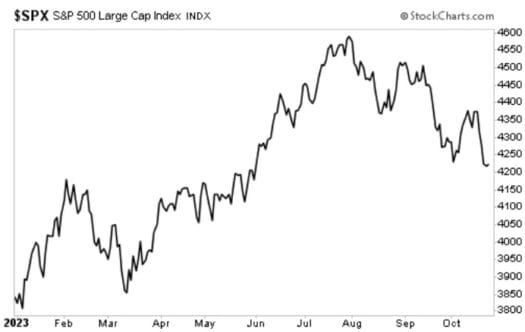Want To Sell A Big Winner? Here’s How To Save Big On Taxes This Year…
As we enter the final stretch of the year, let’s talk about something that could save you a lot of money.
It’s important we address this now, because pretty soon we’ll be busy with the holiday season. And while everyone’s situation is different, there is a good chance you could benefit from this advice. It has to do with taxes on your portfolio, and how just a couple of smart moves can help limit your bill for this year.
We’re talking about tax-loss harvesting.
This may not be something that has occurred to you. That’s OK. But remember, how we manage our portfolio with things like allocation and knowing when to sell can have just as much impact than knowing what to buy. Sometimes even more. And managing a portfolio for tax-efficiency is another important part to successful investing that a lot of investors tend to ignore.
So with that said, let’s dive in…
What Is Tax-Loss Harvesting?
Let’s say you find yourself sitting on a big winner. Maybe you’ve held it for a while. But in this tough economic environment, you’re ready to sell and take your profits. Nobody can blame you for that.
There’s just one problem. We we can’t forget about Uncle Sam — he’s eagerly awaiting his cut. It’s a good problem to have, of course, and this is where tax-loss harvesting can help us out…
As much as we would all like to bat a thousand, the cold hard truth is that not every investment will be a hit (much less a home run). When we do strikeout, the upside is that we can use that loss to lower our tax liability.
Generally, tax-loss harvesting looks like this:
- Sell an investment that’s underperforming and losing money.
- Then, use that loss to reduce taxable capital gains and potentially offset up to $3,000 of ordinary income (more on this in a sec).
- Finally, reinvest the money from the sale into a better opportunity.
A quick reminder: When you sell an investment for a profit, you owe capital gains taxes on the profits based on how long you held the asset. If it was owned for less than one year, it’ll be taxed at your normal income tax rate. If held for more than one year, it’ll be taxed at the preferential long-term capital gains rate, which could be as low as 0% and no higher than 20%, even for top earners.

How To Save Big This Year…
We’re entering the prime time of year for tax-loss harvesting. That’s because savvy investors (especially the pros) begin to think about their tax bill before the year is up.
The market has been fairly good to us in 2023 so far. The S&P 500 is up about 10%, which is slightly above average for a year, historically. So there’s a chance we could see a decent bit of selling for tax purposes as we enter the final months of the year.

Typically, a savvy investor will look to harvest some tax losses when they’re sitting on a big winner they want to sell. To help offset those gains, you should take a look at the losers in your portfolio. Have you lost faith in them? Maybe you have a holding you just want to get rid of but haven’t quite mustered up the courage to cut it from your portfolio.
Whatever the case may be, tax-loss harvesting just might be your answer. It might be what you need to get you over the hump and make the decision to cut the losing position once and for all.
You’ll usually hear about this strategy in years when the market is booming. But it could be beneficial even in a down or sideways year where losses outweigh gains. That’s because losses of more than $3,000 can be carried forward to future tax years to offset income down the road.
But remember… tax-loss harvesting is NOT useful in retirement accounts such as a 401(k) or an IRA. That’s because you can’t deduct the losses generated in a tax-deferred account. So, tax-loss harvesting is only good for regular brokerage accounts.
Why Tax-Loss Harvesting May Be Right For You…
Mutual fund managers and hedge funds routinely use tax-loss harvesting every year to help lower their tax bill. In fact, you could make a strong argument that this pressure to sell losers is one reason why they outperform individual investors.
Either way, it could save you a pretty penny when it comes to taxes this year. (You can read more about optimizing your portfolio for taxes here.)
Again, this strategy isn’t helpful for tax-deferred accounts. We are not tax professionals, so you should always check with a pro to see if tax-loss harvesting is best for your situation… (and no, Turbo Tax isn’t a tax pro).
But take our advice… Carve out some time to look over your portfolio before the end of the year. See if there are any losers you’d like to cut in order to offset the liability you may be facing from some any big wins you may have scored this year. By taking a page from the pros, you could lower your overall bill this year (or carry forward some losses into next year). You’ll be glad you did.
P.S. Wondering when the next big Crypto Boom is going to happen?

We believe NOW is the most important time to buy crypto… if you haven’t yet. Our team thinks a select few cryptos are about to go on another monster run — and we just released a bombshell briefing about how you can profit. Go here for details now.
